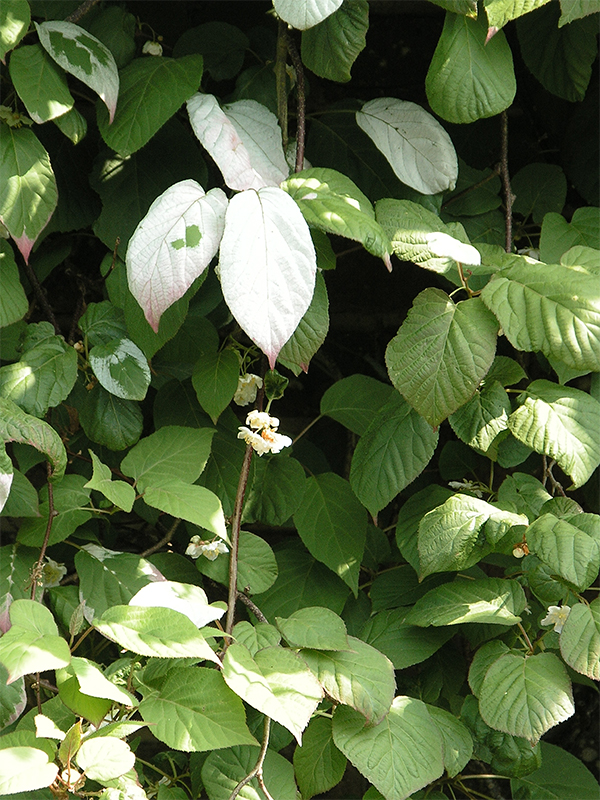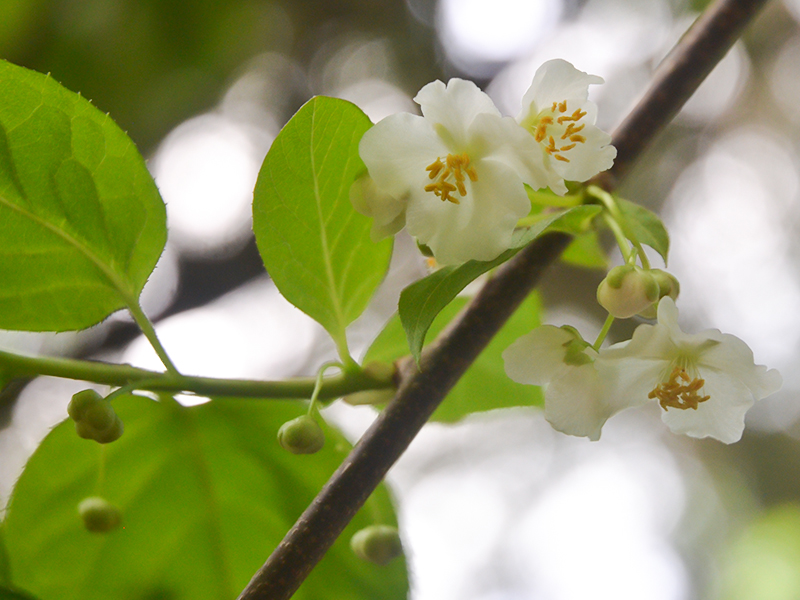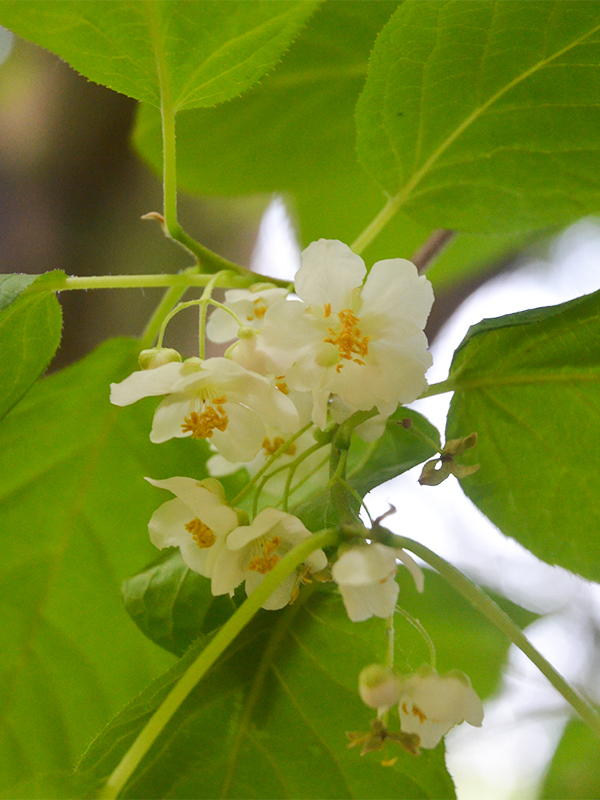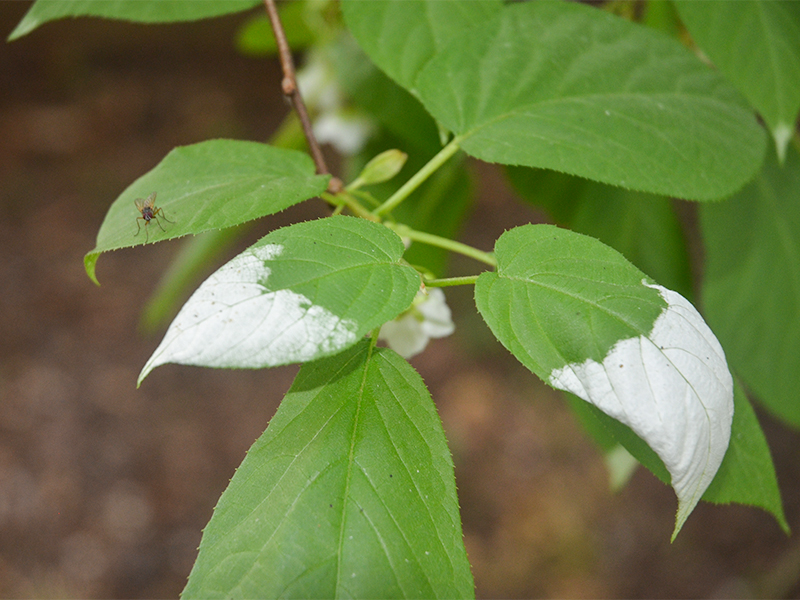
Woody > Actinidia > Actinidia kolomikta > Actinidia kolomikta
Actinidia kolomikta
Kolomikta Actinidia, Hardy Kiwi Vine
Origin: It is endemic to China (Chongqing, Gansu, Hebei, Heilongjiang, Hubei, Jiangsu, Jilin, Liaoning, Shaanxi, Shanxi, Sichuan and Yunnan Provinces) Japan, Korea and Russia and is widely cultivated.
| Family |
| Actinidiaceae |
| Genus |
| Actinidia |
| Species |
| kolomikta |
| Category |
| Woody |
| Type |
| Vine |
| Pronunciation |
| USDA Hardiness Zone |
| 4 - 8 |
| Canadian Hardiness Zone |
| 5 - 9 |
| RHS Hardiness Zone |
| H7 |
| Temperature (°C) |
| -20 |
| Temperature (°F) |
| 5 |
| Height |
| 6 m |
| Spread |
| 6 m |
Photographs
Description and Growing Information
Flowering Period
| Landscape |
| Screening, as it is a climbing plant. |
| Cultivation |
| Full sun and partial-shade. Moist, well-drained soils with a pH of alkaline. Dry-wet soil in tolerant. For fruit production plant one male for every 3 - 4 female plants. |
| Shape |
| Twinning and climbing. |
| Growth |
| Medium |
| Pests |
| Susceptible to Phytophora root rot and some nematodes. Susceptible to fertilizer burn and shallow cultivation injury. |
| Habitat |
| Mountain forests in open places at 1600-2900 m but is also widely cultivated. |
| Bark/Stem Description |
| Branchlets are glabrous with lenticels being inconspicuous to sub-conspicuous when young and conspicuous when old. The pith is lamellate. |
| Flower/Leaf Bud Description |
| Raised, ovoid and 3 - 5 mm in size. |
| Leaf Description |
| The petiole is sparsely pubescent to glabrous and about 2.5 - 5 cm long. The leaf blade is broadly ovate to oblong-ovate, 6 - 15 cm long and 5 - 10 cm wide. Lateral veins are found in 6 - 8 pairs while the veinlets are reticulate and inconspicuous on both surfaces. The leaf base is cordate but occasionally rounded to truncate. The leaf apex is acute to abruptly acuminate. |
| Flower Description |
| Small, slightly fragrant flowers appear in clusters that are hidden beneath leaf growth. The flowers are dioecious (individual flowers are either male or female, but only one sex is to be found on any one plant) and are pollinated by insects. |
| Fruit Description |
| The fruit is glabrous, ovoid, 2 - 2.5 cm. Fruit is produced on second year wood and on fruiting spurs of older wood. |
| Colour Description |
| The pith is brown and the bark on older vines are a dark brown. The petiole is yellowish-white to a reddish-brown. The pedicels are a yellowish-brown. The flowers are a pinkish-white. The fruit is pale orange when mature. |
| Texture Description |
| The leaves have a membranous to thin papery texture. The vine is soft because of slightly hairy stems. |
| Notable Specimens |
| Rayner Gardens, London, Ontario, Canada. Cotehele House National Trust, St Dominick, Cornwall, United Kingdom. |
| Propagation |
| Semi-hardwood cuttings, by removing 2 - 3 node cuttings late in summer, treat with 0.6 - 0.8% IBA , while providing bottom heat of 21° C under mist, rooting should take 3 - 4 weeks. Sow seeds in the spring after a stratification period of two weeks in 0°C - (-10° C), after stratification germinate seeds at 13 - 18° C. Tissue culture is also used. |
| Ethnobotanical Uses (Disclaimer) |
| In published herbals the fruit are recommended to counteract anemia, and gastrointestinal diseases. In the Far East, the fruit is used to treat bleeding, scurvy, toothache, tuberculosis and rheumatism. The fruit is edible and very flavourful (containing up to 5 times more vitamin C than black currants, lemons and oranges). |




